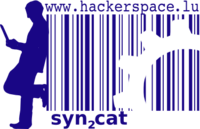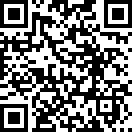Clutter Experiments
| Line 10: | Line 10: | ||
Because user interfaces benefit immensely from using language-native object orientation, [http://www.openismus.com Openismus] has produced high-quality C++ bindings: [http://git.gnome.org/cgit/cluttermm cluttermm] There also exist bindings for python which should be useful for making interface mockups. | Because user interfaces benefit immensely from using language-native object orientation, [http://www.openismus.com Openismus] has produced high-quality C++ bindings: [http://git.gnome.org/cgit/cluttermm cluttermm] There also exist bindings for python which should be useful for making interface mockups. | ||
| − | Using these, classes can be defined painlessly which have independent behaviours according to their own states and the state of the stage, making the | + | Using these, classes can be defined painlessly which have independent behaviours according to their own states and the state of the stage, making the management of large collections of actors really simple. |
Murray Cumming and co. from Openismus have written tutorials for both [http://www.openismus.com/documents/clutter_tutorial/0.9/docs/tutorial/html/index.html clutter] and [http://www.openismus.com/documents/cluttermm_tutorial/0.9/docs/tutorial/html/index.html cluttermm]. (Note: the cluttermm tutorial still includes the deprecated Clutter::EffectsTemplate which has been replaced with Clutter::Animation) | Murray Cumming and co. from Openismus have written tutorials for both [http://www.openismus.com/documents/clutter_tutorial/0.9/docs/tutorial/html/index.html clutter] and [http://www.openismus.com/documents/cluttermm_tutorial/0.9/docs/tutorial/html/index.html cluttermm]. (Note: the cluttermm tutorial still includes the deprecated Clutter::EffectsTemplate which has been replaced with Clutter::Animation) | ||
Revision as of 15:10, 30 May 2009
| | |
|---|---|
| clutter is a next-generation canvas library for open architectures | |

| |
| Meetings: | none |
| Type: |
|
| Status: | planning |
| Members: | |
| Contact Person: | |
| Tools | |
| QrCode: | 
|
"File:" cannot be used as a page name in this wiki.
Clutter is an open-source canvas library for animating actors (textures, shapes, text etc..) on a stage (OpenGL accelerated screen) using timelines and animations. It can be used to create advanced user interfaces as it sports a full set of signals for interaction. For instance, it is used for the new Moblin interface. It can be integrated into GTK+ applications as a widget and is ideally suited for living in the GTK+ ecosystem, using GObject in depth.
Because user interfaces benefit immensely from using language-native object orientation, Openismus has produced high-quality C++ bindings: cluttermm There also exist bindings for python which should be useful for making interface mockups.
Using these, classes can be defined painlessly which have independent behaviours according to their own states and the state of the stage, making the management of large collections of actors really simple.
Murray Cumming and co. from Openismus have written tutorials for both clutter and cluttermm. (Note: the cluttermm tutorial still includes the deprecated Clutter::EffectsTemplate which has been replaced with Clutter::Animation)
As an example, I've prepared two short screencasts showing off a mock UI displaying the pages of a PDF book (loaded using poppler) and a short animation of hundreds of small squares oscillating with a radial sinc (sin(r)/r) function.
Since we have a few people who are interested in multitouch interfaces and SDL or OpenFrameworks don't integrate well with existing user interfaces, Clutter seems to be a prime candidate for experimenting with this exciting new way of building user interfaces.
<videoflash>7tvDysXsEqA</videoflash> <videoflash></videoflash>